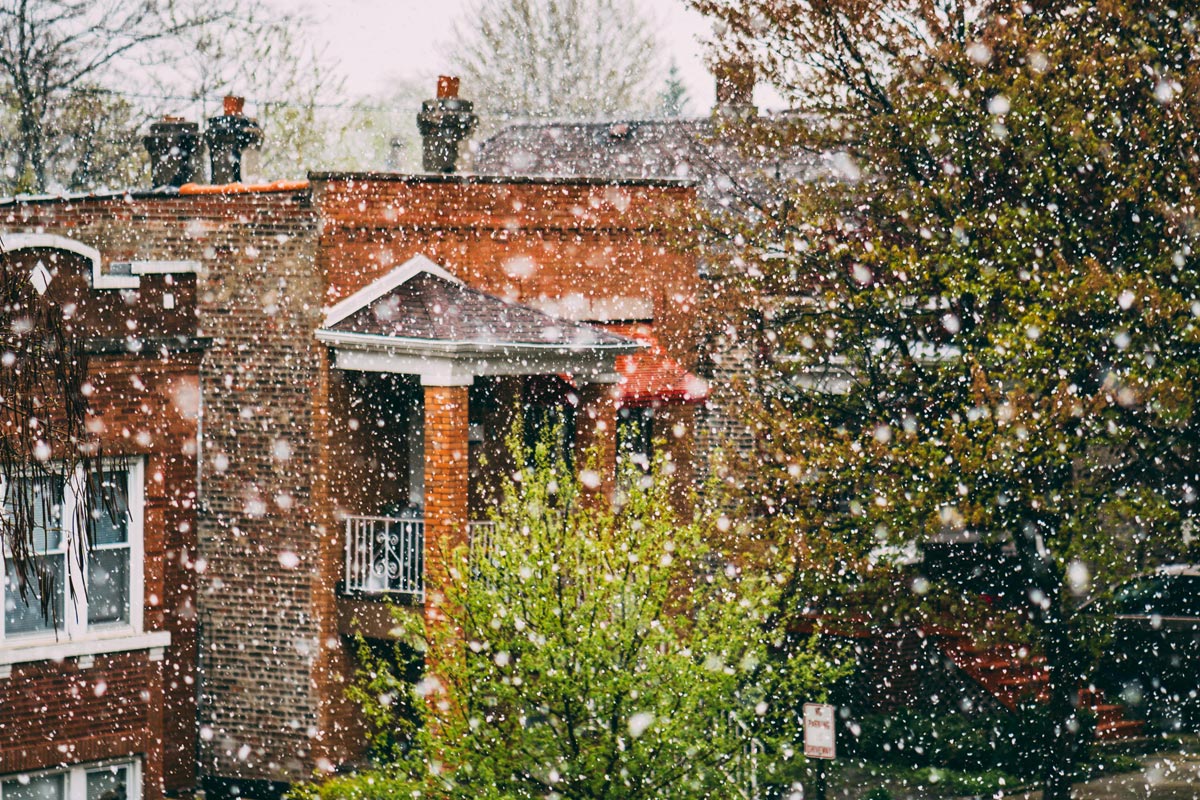Need to Move During Extreme Weather?
We watch the seasons change and know that winter is not far away. When it comes to moving, you can plan for a lot of things, but shifts and changes in the weather are not one of them.
When you set up plans with your moving company, you ask about weather delays and sudden changes. Coastal areas in the eastern portion of the country are vulnerable to hurricanes.
Rain and wintery weather can wreak havoc on an otherwise perfectly coordinated move. Even if you know the weather forecast well in advance, it is important to prepare for the worst-case scenario.
Depending on the location of your move, winter months can be brutal—winter storms and icy roads happen. But the same is true for hot summer months. Any extreme weather can hamper your moving plans.
Changing a moving date may feel overwhelming, but experienced relocation movers know how to address this without hesitation. Make sure you know what their policy is concerning extreme weather. Thankfully, most of the time, everything works out well. So be encouraged!
What do you do for extreme weather conditions? Here are a few suggestions.
Preparing for the move
From spontaneous summer showers to unexpected winter storms, there’s only so much you can do with a changing forecast. So, basically, you must be prepared for whatever happens.
- Moving on a summer day? Start your move earlier in the day and have sunscreen on hand.
- Make sure you have lots of bottled water for hot days, and coffee, or cocoa for cold days.
- Keep rain jackets and ponchos on hand for yourself. Your professional moving team should be outfitted correctly. If you rely on friends and family, ensure you have extra ponchos in your moving kit!
- Extra umbrellas
- Winter hats and gloves
- Rain boots, extra socks, and sneakers
- Moving in the winter, include hand warmers, mufflers, and warm socks.
- Extra towels on-hand
- Durable, waterproof trash bags
- Plastic bins
- Plastic wrap
- Waterproof tarps
- Shovels for snow
- Salt for sidewalks, driveways, and doorsteps
Protecting your belongings from damaging weather is a top priority.
- Wrap wooden furniture, appliances, artwork, and mirrors in heavy plastic wrap, heavy towels, or moving blankets.
- Having your moving company professionally wrap all your larger electronics, such as toaster ovens, TVs, and more.
- Packing as much as possible (especially paper items) in plastic, waterproof bins. Water can easily seep in through cardboard boxes, ruining whatever books, photos, or pillows happen to be inside.
- Place small electronics, cords, and cables in sealed, waterproof plastic bags before packing them in boxes.
- Line your boxes. An alternative to wrapping up boxes on the outside is to wrap up your belongings from the inside. It’s hard to do if you already have things packed, but if not, this works to keep moisture out and valuables dry and safe on the inside. Use garbage bags—seal them, and then fill the boxes. That way, even if the packages get wet in the rain, everything inside will be protected.
Remember: One advantage to hiring a qualified moving company is that your movers have the skills and tools to keep your belongings dry and safe during the move.
Transporting your belongings
Plan for your transportation well in advance. If you’re driving a large moving truck, you’ll need to consider the best route to take in case of deteriorating road conditions. Here are a few pieces of advice for hitting the road on a moving day:
- Plan a route for best-case scenario weather and a course for worst-case scenario weather. While taking back roads may be a smart way to save time on a typical moving day, they will only slow you down in treacherous driving conditions. Tip: Stick to main roads and highways, which are typically cleared of snow and ice first.
- Bring a snow shovel, snowblower, and salt for sidewalks if moving during the winter.
- Tarps are great items to have on hand as movers walk from the truck to the house.
Protecting your new house
Whether lousy weather comes or not, put a plan to protect your new house: entryways, flooring, and walls. Cover your hardwoods, flooring, and carpet! Stains and scratches happen, especially when people are rushed.
- First and foremost, protect your entryway floors. You can purchase a roll of paper strong enough for added protection. Use painter’s tape to attach it to the floors. Try to stay “trip-free” by avoiding using towels and blankets. I have those handy for wiping shoes.
- Those with wood floors should be especially careful to protect them from water damage.
- If cardboard boxes get wet, unpack them as quickly as possible. Recycle all cardboard boxes immediately after the move, since they’re no longer salvageable.
- If it’s snowing, icing, or raining, ensure driveways, sidewalks, and front doorsteps are all clear and safe to stand and walk on.
Here are some pros and cons of each season: Here
- Summer: Ideal time if you sell your home since demand is highest and you may get a higher price. Also, if you are moving with children, this season is best since they won’t be in school. However, summer is also the busiest time of year for professional moving companies, and you may have to pay more or book in advance. The weather can also be scorching and humid, making moving more uncomfortable and riskier for your belongings.
- Fall: Great weather conditions for moving, and you may get a better deal on a home during the off-season. Fall can also be ideal for moving to a new city or state, as you can enjoy the changing colors and festivals. However, fall is also the start of the school year, and you may have to deal with some disruptions or adjustments for your children. The days are also shorter, and the weather can be unpredictable.
- Winter: Cheapest time of the year to move since demand is lowest. Moving companies have more flexible schedules and may offer discounts or incentives. You may also find lower prices on housing and utilities. However, winter can also be the most challenging time to move due to the cold, snow, and ice. You may have to deal with road closures, delays, or cancellations. You may also take extra precautions to protect your belongings from freezing or breaking.
- Spring: The weather won’t be as harsh as winter, and demand is still lighter in March and April. Spring is also an excellent time to declutter and organize your belongings before packing. You may also find more options for housing as the market picks up. However, spring can also be a busy time for many people with work, school, and holidays. The weather can also be rainy or stormy, affecting your moving plans.
Ultimately, the best time to move will depend on your needs, budget, and preferences. You can use this link to compare different moving options and find the best one for you.
Do you have any questions regarding your move, we’re here to help!
Are you in the market for a mover in Alabama? Lambert Moving Systems is one of the top companies for moving in Alabama. We’ve been around for 90 years. Find your location below to get in touch now!
Photo by Ricky Esquivel on Pexels








